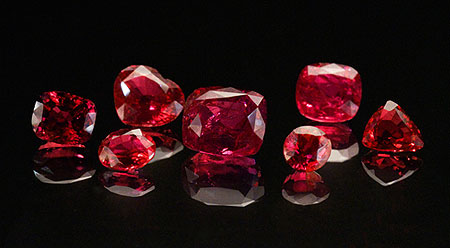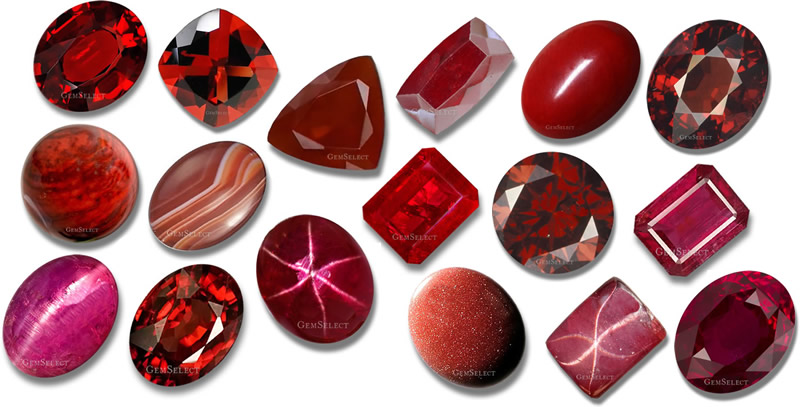RUBY
Color is the most significant factor affecting a Gemstone ruby value. The finest ruby has a pure, vibrant red to slightly purplish red color. As the color becomes too orangy or more purplish, the ruby moves down the quality scale. The highest-quality rubies have vivid color saturation.
The color must be neither too dark nor too light to be considered finest quality. If the color is too dark it has a negative effect on the stone’s brightness. At the other extreme, if the color is too light, the stone is considered pink sapphire, even if color strength or intensity is high.
Some gem dealers debate the borderline between Gemstone ruby and pink sapphire. Historically, the word ruby referred to shades of red, which technically included pink. There are also cultural differences in the interpretation of ruby versus pink sapphire. In some gem-producing nations such as Sri Lanka, pink colors were always considered ruby, while in many consuming countries it is classified as pink sapphire.

Trade Terms & masterstone
The AIG Laboratory uses a controlled set of comparison stones called masterstones to determine if corundum is ruby or if it’s pink, purple, or orange sapphire. The laboratory grades its masterstones on the principle that red must be the dominant hue before a stone can be called a ruby. In the gem trade, though, identification of the dominant hue is subject to personal perception.
Blood is another symbol of ruby’s color. Descriptions have compared ruby to the “blood from the right ventricle” or the first two drops of blood from a freshly killed pigeon. Historically, the term “pigeon’s blood” described the red to slightly purplish or pinkish red color of rubies with a soft, glowing, red fluorescence.
Traditional descriptions like these are useful for evoking images and describing color among professionals. But they can be subject to misinterpretation when used to describe a ruby’s actual color.
Trade terms can represent certain colors and qualities that are associated with a stone’s source. The qualities might be typical of that source or they might represent the finest stones from that source.

